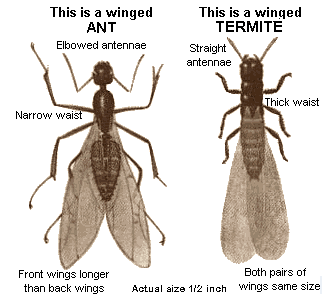What Makes Tree-Dwelling Termites Unique?
 Many people have heard that termites are divided into three basic groups. These groups are subterranean termites, which are soil-dwellers, drywood and dampwood termites. The termites that are almost always responsible for infestations in people’s homes are subterranean termites. This is because subterranean termites form large colonies that travel unseen beneath the ground’s surface. Both drywood and dampwood termite species infest single pieces of wood, most often rotting wood located in forested areas that are free from manmade structures. In addition to these termites, there is another group that nests on the branches of trees. Some of these termites can be included in the subterranean category, but they are usually referred to as “arboreal termites”. All arboreal termites belong to the Nasutitermes genus, and they only exist within Central and South America. However, these termites have recently been spotted near southern Florida’s shipping ports. These termites are sought after for a variety of reasons ranging from the scientific to the culinary.
Many people have heard that termites are divided into three basic groups. These groups are subterranean termites, which are soil-dwellers, drywood and dampwood termites. The termites that are almost always responsible for infestations in people’s homes are subterranean termites. This is because subterranean termites form large colonies that travel unseen beneath the ground’s surface. Both drywood and dampwood termite species infest single pieces of wood, most often rotting wood located in forested areas that are free from manmade structures. In addition to these termites, there is another group that nests on the branches of trees. Some of these termites can be included in the subterranean category, but they are usually referred to as “arboreal termites”. All arboreal termites belong to the Nasutitermes genus, and they only exist within Central and South America. However, these termites have recently been spotted near southern Florida’s shipping ports. These termites are sought after for a variety of reasons ranging from the scientific to the culinary.
Nasutitermes termites are the most abundant termites in the Americas. They build their nests at both high and low areas of a tree. These termites inhabit a variety of trees, but mango and avocado trees seem to be their preferred habitat. However, these termites have also been found nesting on concrete, metal and wooden structures. Their nests feel like hard cardboard, and they construct these nests with both feces and digested wood in order to create this sturdy and protective outer shell. Much like eastern subterranean termites in North America, Nasutitermes termite colonies contain around 56,000 individual termites, but the N. Coringer species can form colonies comprised of one million termites. These termites are relatively well protected from predators, as they nest high above the ground. They also secrete a sticky substance that irritates the skin of predators, such as anteaters and birds. Another unique aspect of the Nasutitermes genus is the presence of only one single reproductive female. If this female dies, then so will the colony. This one reproductive female resides at the center of the nest, which is usually at a tree’s stump. This area is heavily reinforced so that the female’s eggs can remain safe from attack. The female does produce winged reproductives, but they remain within the nest for several months before establishing new colonies elsewhere. These termites are now being studied for their potential contribution to a new form of bio-fuel, and they are reported as being the most delicious tasting termite in the world.
Have you ever spotted an arboreal termite nest?






